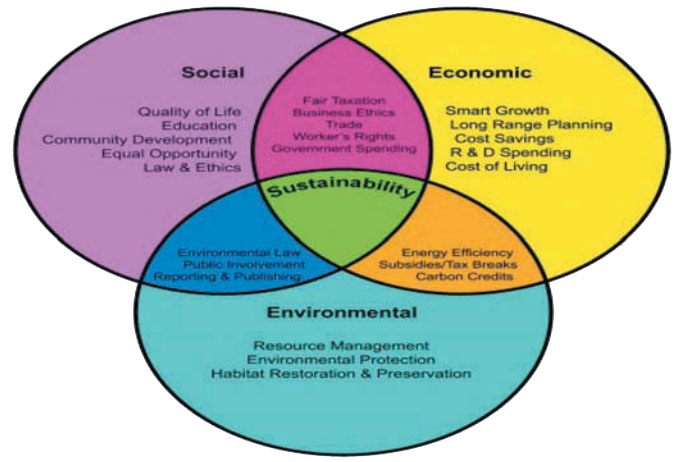Corporate Social Responsibility and sustainable development in China
Dongyong Zhang, Stephen Morse, Uma Kambhampati
This chapter explores the trajectory of development in China, the extent to which this development is sustainable, and the role played by firms in such development. It provides brief history of China, concentrating on the post-1978 period when significant changes were undertaken. The chapter describes the structural changes that have taken place in the Chinese economy including a shift towards an open economy with mixed ownership of the means of production. It discusses the way in which firms themselves have responded to the call for growth and, more recently, for sustainable growth as well as the Corporate Social Responsibility efforts made by Chinese firms and the drivers involved. The revolution paralysed China’s political system, negatively affected the country’s economy to a significant degree, and led to a major upheaval in Chinese society. The centre of China’s reforms has been the transformation from a centrally planned economy to a socialist mixed-market economy.
Sustainable development of smart cities and smart territories based on the model of minimizing externalities
Published in F1000Research 2022, 11:522
The development of conceptual models of a digital city poses numerous challenges for developers. The public sector concept model has become one of the most difficult models to use. When developing algorithms to find a solution, the multidirectional interests of businesses and public institutions are combined. This type of model reflects the most acute and urgent problems faced by megapolises with regard to combining numerous localized services provided to the community in a limited territory. The administrations of both cities and regions (the scale of the smart territories) must make decisions concerning overcoming the barriers existing between the profits of commercial structures, the negative externalities generated by their activities, and the social benefits to the population in the territory under their control. It is necessary to solve this problem to achieve the effective management of enterprises belonging to the segment of long-term participants in various business activities, interacting with the surrounding social and business environment in a complex. This study takes into account the complex structures of the economic processes characteristic of megacities. The periodicity of economic processes is also taken into account. When choosing an optimization criterion, functions reflecting the level of internalization of responsibility for external effects were considered.
A Sustainable Model for Emergency Medical Services in Developing Countries: A Novel Approach Using Partial Outsourcing and Machine Learning
Published in Risk Management and Healthcare Policy
Unlike Western countries, many low- and middle-income countries (LMIC), like India, have a de-centralized emergency medical services (EMS) involving both semi-government and non-government organizations. It is alarming that due to the absence of a common ecosystem, the utilization of resources is inefficient, which leads to shortage of available vehicles and larger response time. Fragmentation of emergency supply chain resources motivates us to propose a new vehicle routing and scheduling model equipped with novel features to ensure minimal response time using existing resources. The data set of medical and fire-related emergencies from January 2018 to May 2018 of Uttarakhand State in India was provided by GVK Emergency Management and Research Institute (GVK EMRI) also known as 108 EMSs was used in the study. The proposed model integrates all the available EMS vehicles including partial outsourcing to non-ambulatory vehicles like police vans, taxis, etc., using a novel two-echelon heuristic approach. In the first stage, an offline learning model is developed to yield the deployment strategy for EMS vehicles. Seven well researched machine learning (ML) algorithms were analyzed for parameter prediction namely random forest (RF), convolutional neural network (CNN), k-nearest neighbor (KNN), classification and regression tree (CART), support vector machine (SVM), logistic regression (LR), and linear discriminant analysis (LDA). In the second stage, a real-time routing model is proposed for EMS vehicle routing at the time of emergency, considering partial outsourcing.
Rethinking Arctic sustainable development agenda through indigenizing UN sustainable development goals
Published in International Journal of Sustainable Development & World Ecology
The year 2020 has urged Humanity to rethink the sustainable development agenda. The COVID-19 pandemic rearticulated the gaps in implementing the Sustainable Development Goals (SDGs) to benefit remote regions and and their populations including Arctic Indigenous Peoples. In this brief communication, we want to draw attention to the need of reshaping UN SDGs in light of the ‘new normal’ to promote sustainable development of Arctic Indigenous communities. The UN Agenda 2030 sets priorities that have relevance to the Arctic, with its rapidly changing environmental and social systems that are interlinked to other parts of the globe. Successful implementation of SDGs in the Arctic can only be accomplished through an open and pluralistic dialog among global and Arctic stakeholders with the engagement, equal partnership, and under the guidance of the Arctic Indigenous Peoples. This process, we argue, could start by revising the existing 17 goals and creating five new ones (Sustainable Governance and Indigenous Rights, Resilient Indigenous Societies, Livelihoods and Knowledge systems, Life on Ice and Permafrost, Equity and Equality in Access to Natural Resources, and Investment in Youth and Future Generations) that represent Indigenous People’s knowledge and aspirations for sustainable development. By indigenizing SDGs in the Arctic, we will not only build the Arctic’s own sustainable development framework but attain greater equity and expand the knowledge base of sustainable development globally.
 China
China  Africa
Africa 

